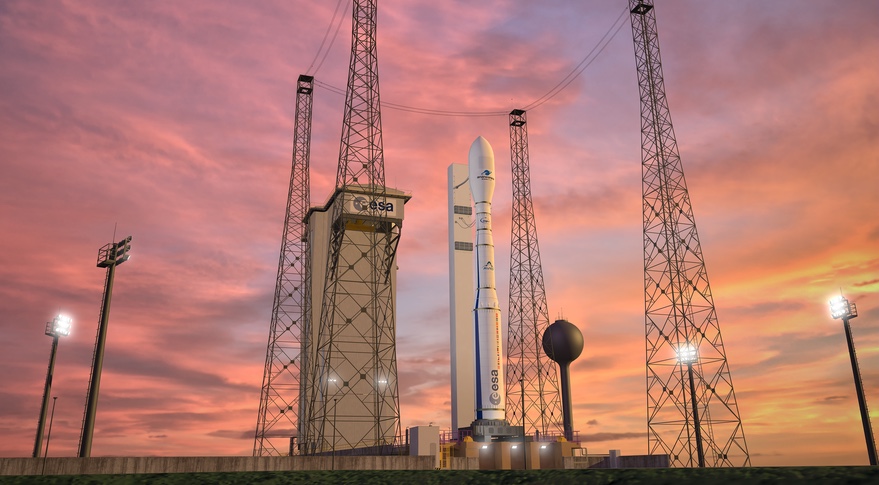WASHINGTON — The European Space Agency is continuing to study options to ensure a continued supply of upper stage engines for the Vega C rocket as that vehicle gears up for its inaugural launch.
The first flight of the Vega C, an upgraded version of the Vega small launch vehicle, is scheduled for 7:13 a.m. Eastern on July 13 from Kourou, French Guiana. The four-stage rocket’s primary payload is an Italian physics satellite, Laser Relativity Satellite-2 or LARES-2, a 295-kilogram spacecraft whose orbit will be closely tracked to test general relativity. The rocket is also carrying six cubesat secondary payloads.
The Vega C features several upgrades, including two new solid-propellant motors, the P120 first stage — which will also be used as strap-on boosters for the Ariane 6 — and Zefiro-40 second stage. Those upgrades will increase the payload capacity from about 1,500 to 2,300 kilograms to a circular polar orbit.
“We have a completely new launcher which comes from the heritage of Vega,” said Stefano Bianchi, head of ESA’s Flight Programmes Department, during a July 7 media briefing about the upcoming Vega C launch.
Russia’s invasion of Ukraine, though, created uncertainty about the future of Vega C. The rocket’s AVUM upper stage uses an engine manufactured by Ukrainian company Yuzhmash, and European officials acknowledged in the spring they were looking at options should it lose access to those engines.
Bianchi said ESA was studying several options, including business as usual. “We wish to continue our cooperation with Ukraine for reasons that you can certainly understand. They have been, so far, a very reliable partner,” he said.
Avio, the prime contractor for Vega, has a stockpile of AVUM engines in Italy, he said, but did not disclose how many engines are in that stockpile. In an April interview, Josef Aschbacher, ESA director general, said six engines had been delivered, enough for launches through 2023.
ESA is also looking at several options to replace the AVUM engine. One is to accelerate development of Avio’s M10 engine, a liquid oxygen/methane engine the company is developing for the future Vega E vehicle. Bianchi said testing of the M10 engine is in progress.
ESA is also considering two other engines that could replace AVUM in the near term if the supply of that engine is cut off, but he did not disclose which ones are under study. “We are doing everything to avoid any discontinuation in the launches of Vega because it is crucial.”
There was no risk of a pause in launches through the “medium-term,” he said, because of the stockpile of AVUM engines. “We are working on risk mitigation for whatever will happen.”
There are 14 Vega C launches on the vehicle’s manifest through 2025, including five in 2023 and four each in 2024 and 2025. Bianchi said the launches are for a mix of institutional customers, such as ESA, the European Union and the Italian Space Agency ASI, as well as commercial customers that he did not identify.
The Vega C is more than two years behind schedule, with its first flight originally planned to take place by the end of 2019. Bianchi blamed the delays on two Vega launch failures in 2019 and 2020 that took engineers away from the Vega C program. The pandemic also slowed progress, he added.
“We did not have major issues in development” of Vega C, he said, noting that work on the P120 and Zefiro-40 stages “went quite smoothly.”
Ettore Scardecchia, head of engineering at Avio, said the company felt better prepared for the inaugural Vega C launch than it did for the first Vega launch a decade ago. “Now, we are more aware of what it means to launch. We are more aware of all the risks,” he said.
“The team is really motivated, as it was in the first flight,” he added. “We rely on this motivation of all the team, of all the companies, to have a good flight.”
